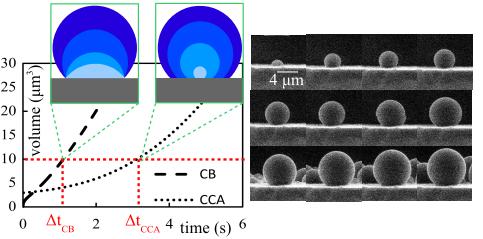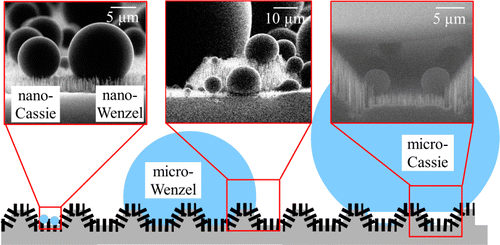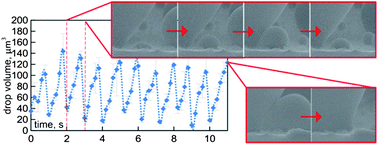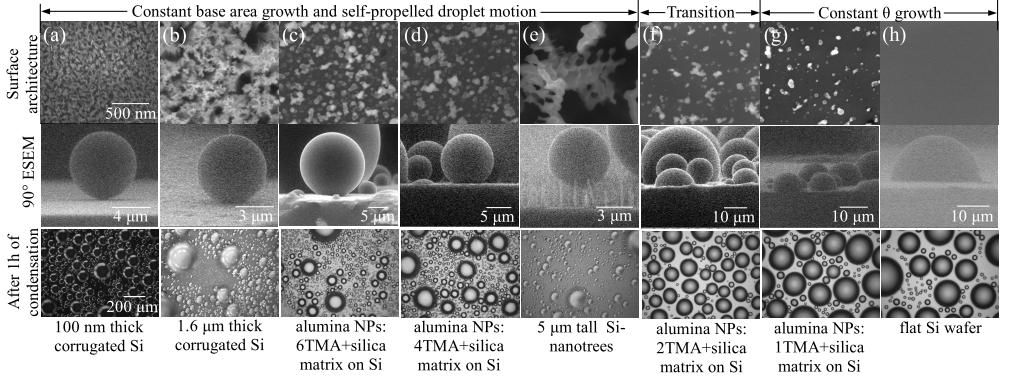Development of passive ways to enhance water condensation rate could dramatically improve the energy efficiency of power generation and water desalination. The rate of this phase change process is limited by how quickly condensate can depart the surface. For example, the condensation rate is significantly higher during condensation on hydrophobic surfaces, which promote formation of easily shedding droplets, than on hydrophilic surfaces promoting water film formation (i.e. dropwise vs. filmwise condensation mode). On vertically inclined flat hydrophobic surfaces drops with diameters larger than the capillary length (2.7 mm) can slide off the surface due to gravity. In contrast, on properly designed nanostructured superhydrophobic surfaces even microscale droplets can depart the surface via spontaneous droplet motion. Our work in this area has focused on use of traditional high speed light imaging and novel electron microscopy imaging techniques to understand the mechanism of drop formation and coalescence on nano/micro-engineered superhydrophobic coatings as well as optimization of such coatings for condensation applications.






